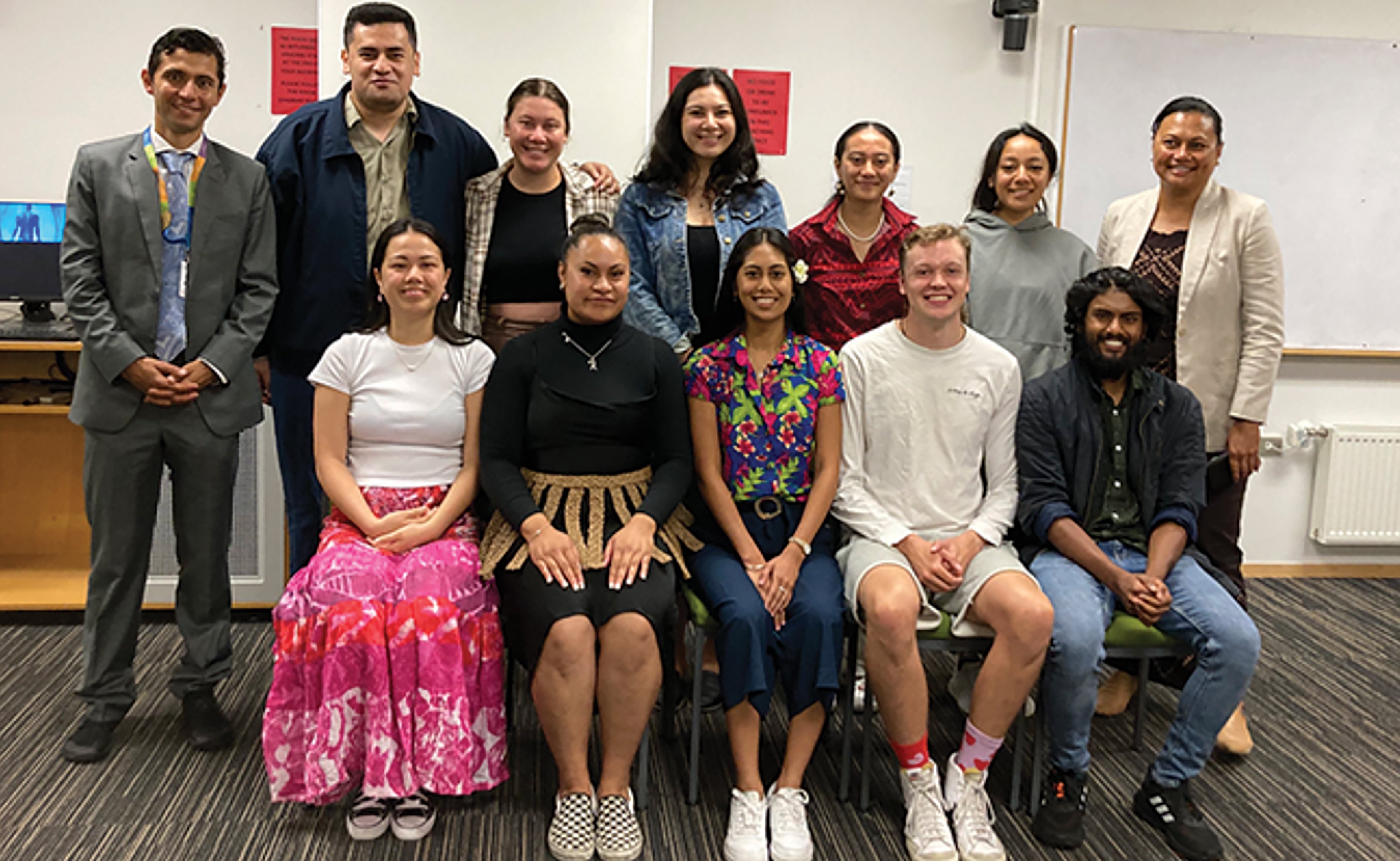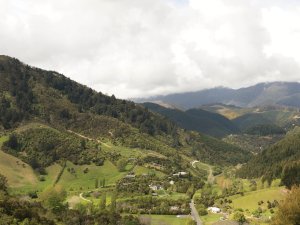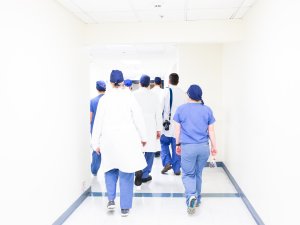Respiratory physician Lutz Beckert considers chronic obstructive pulmonary disease management, including the prevention of COPD, the importance of smoking cessation and pulmonary rehabilitation, and the lifesaving potential of addressing treatable traits. He also discusses the logic of inhaler therapy, moving from single therapy to dual and triple therapy when indicated, as well as other aspects of management
From Samoa to West Coast to serve: Rural programme strikes a chord with Pacific students
From Samoa to West Coast to serve: Rural programme strikes a chord with Pacific students

Samoan-born medical student Michaela Peters took a leap last month, moving from Wellington to Greymouth to spend a year in rural general practice.
It fits nicely with Miss Peters’ plan to return eventually to Samoa, armed with rural health knowledge.
Pacific and rural healthcare are similar in many ways and this could be one reason Pacific students are interested in Otago Medical School’s Rural Medical Immersion Programme, she says.
Ten of the 25 places in the programme went to students of Pacific descent in 2023.
Miss Peters moved to Aotearoa when she was 13 and after high school headed to Dunedin to study medicine. She quickly learned about the rural immersion programme from other students.
She now lives in a Greymouth flat with three other Samoan students placed on the West Coast for the year-long immersion experience.
Miss Peters says the rural programme appeals in a particularly personal way to Pacific students, many of whom have a dream to serve their island communities.
Several of the students in this year’s programme are on scholarships from their island nations, adding significance to the desire to return, Miss Peters says.
Moving to the West Coast was a big step – her family lives in Wellington – but she soon met a local Pacific family while working at the hospital.
The family was pleased to be treated by another Pacific person, and immediately made her feel at home by offering to cook her a meal.
“They told me how nice it was to have a Pacific person looking after them in the hospital. That just made my whole day,” Miss Peters says.
Patients must be cared for by doctors who know and understand them, she says. “That could be as basic as knowing the language they speak, and understanding the reasons why they’ve come to see the doctor.”
It’s important for Pacific people to be in healthcare roles so that, for example, they can understand why a Pacific patient presents late or has complications.
Miss Peters is already thinking about how she can contribute to the programme and to both the rural and Pacific workforces.
“I’ve spent one week here and I’m already thinking about how I need to recruit fourth-years to apply.”
“We need more Pacific students to apply and, hopefully, in the future, we will contribute back to our rural communities by working here.”
Miss Peters naturally thinks of working in Samoa because her upbringing taught her the pathway to leadership is through service. However, she also can visualise a future in rural West Coast: “I’ve already seen a house on the street that I want to buy in 10 years’ time.”
The Rural Medical Immersion Programme launched in 2007 was the University of Otago’s response to the rural workforce shortage.
Co-director Emma Boddington says the programme has been successful in increasing rural doctor numbers. Research suggests that going through the programme increases five-fold a student’s intention of working rurally.
The year-long rural immersion programme has a written application and interview process and accepts 25 fifth-year medical students from the university.
Dr Boddington hopes the programme will continue to expand because many good applicants do not get in. “It’s sad because honestly I’d love to give everyone a place because the standard of applications is incredibly high, and they’re a great bunch of students.”
Fifth-year medical students are usually on hospital rotation in five-week blocks, alongside tutorial and lecture-based academic learning. With rural immersion, student Michaela Peters says, the learning is done in a more organic way.
“It’s about learning from patients – whoever walks through the door and really getting to know patients over the year.”
Dr Boddington says this year is the first cohort to show a significant trend towards Pacific students. Alongside the 10 Pacific students, six this year are Māori, according to figures provided to New Zealand Doctor Rata Aotearoa.
In the five years prior to 2023, there had been between one and three Pacific students and three Māori students per cohort, and the remaining majority were of Pākehā descent.
All students start the programme with two weeks in Dunedin, and then split into groups of three or four and travel to assigned placements in Marlborough, Southland, Tararua, Wairarapa, Clutha, Ashburton and the West Coast.
Students request which area they would prefer and the university does its best to accommodate this, but Dr Boddington says not everyone can get their first choice.
We're publishing this article as a FREE READ so it is FREE to read and EASY to share more widely. Please support us and the hard work of our journalists by clicking here and subscribing to our publication and website


![Graduates [Image: Baim Hanif on Unsplash]](/sites/default/files/styles/cropped_image_4_3/public/2022-12/20092019_graduates_0.jpg?itok=T0tWrAKA)





![Barbara Fountain, editor of New Zealand Doctor Rata Aotearoa, and Paul Hutchison, GP and senior medical clinician at Tāmaki Health [Image: Simon Maude]](/sites/default/files/styles/thumbnail_cropped_100/public/2025-03/Barbara%20Fountain%2C%20editor%20of%20New%20Zealand%20Doctor%20Rata%20Aotearoa%2C%20and%20Paul%20Hutchison%2C%20GP%20and%20senior%20medical%20clinician%20at%20T%C4%81maki%20Health%20CR%20Simon%20Maude.jpg?itok=-HbQ1EYA)
![Lori Peters, NP and advanced health improvement practitioner at Mahitahi Hauora, and Jasper Nacilla, NP at The Terrace Medical Centre in Wellington [Image: Simon Maude]](/sites/default/files/styles/thumbnail_cropped_100/public/2025-03/2.%20Lori%20Peters%2C%20NP%20and%20advanced%20HIP%20at%20Mahitahi%20Hauora%2C%20and%20Jasper%20Nacilla%2C%20NP%20at%20The%20Terrace%20Medical%20Centre%20in%20Wellington%20CR%20Simon%20Maude.jpg?itok=sUfbsSF1)
![Ministry of Social Development health and disability coordinator Liz Williams, regional health advisors Mary Mojel and Larah Takarangi, and health and disability coordinators Rebecca Staunton and Myint Than Htut [Image: Simon Maude]](/sites/default/files/styles/thumbnail_cropped_100/public/2025-03/3.%20Ministry%20of%20Social%20Development%27s%20Liz%20Williams%2C%20Mary%20Mojel%2C%20Larah%20Takarangi%2C%20Rebecca%20Staunton%20and%20Myint%20Than%20Htut%20CR%20Simon%20Maude.jpg?itok=9ceOujzC)
![Locum GP Helen Fisher, with Te Kuiti Medical Centre NP Bridget Woodney [Image: Simon Maude]](/sites/default/files/styles/thumbnail_cropped_100/public/2025-03/4.%20Locum%20GP%20Helen%20Fisher%2C%20with%20Te%20Kuiti%20Medical%20Centre%20NP%20Bridget%20Woodney%20CR%20Simon%20Maude.jpg?itok=TJeODetm)
![Ruby Faulkner, GPEP2, with David Small, GPEP3 from The Doctors Greenmeadows in Napier [Image: Simon Maude]](/sites/default/files/styles/thumbnail_cropped_100/public/2025-03/5.%20Ruby%20Faulkner%2C%20GPEP2%2C%20with%20David%20Small%2C%20GPEP3%20from%20The%20Doctors%20Greenmeadows%20in%20Napier%20CR%20Simon%20Maude.jpg?itok=B0u4wsIs)
![Rochelle Langton and Libby Thomas, marketing advisors at the Medical Protection Society [Image: Simon Maude]](/sites/default/files/styles/thumbnail_cropped_100/public/2025-03/6.%20Rochelle%20Langton%20and%20Libby%20Thomas%2C%20marketing%20advisors%20at%20the%20Medical%20Protection%20Society%20CR%20Simon%20Maude.jpg?itok=r52_Cf74)
![Specialist GP Lucy Gibberd, medical advisor at MPS, and Zara Bolam, urgent-care specialist at The Nest Health Centre in Inglewood [Image: Simon Maude]](/sites/default/files/styles/thumbnail_cropped_100/public/2025-03/7.%20Specialist%20GP%20Lucy%20Gibberd%2C%20medical%20advisor%20at%20MPS%2C%20and%20Zara%20Bolam%2C%20urgent-care%20specialist%20at%20The%20Nest%20Health%20Centre%20in%20Inglewood%20CR%20Simon%20Maude.jpg?itok=z8eVoBU3)
![Olivia Blackmore and Trudee Sharp, NPs at Gore Health Centre, and Gaylene Hastie, NP at Queenstown Medical Centre [Image: Simon Maude]](/sites/default/files/styles/thumbnail_cropped_100/public/2025-03/8.%20Olivia%20Blackmore%20and%20Trudee%20Sharp%2C%20NPs%20at%20Gore%20Health%20Centre%2C%20and%20Gaylene%20Hastie%2C%20NP%20at%20Queenstown%20Medical%20Centre%20CR%20Simon%20Maude.jpg?itok=Z6u9d0XH)
![Mary Toloa, specialist GP at Porirua and Union Community Health Service in Wellington, Mara Coler, clinical pharmacist at Tū Ora Compass Health, and Bhavna Mistry, specialist GP at Porirua and Union Community Health Service [Image: Simon Maude]](/sites/default/files/styles/thumbnail_cropped_100/public/2025-03/9.%20Mary%20Toloa%2C%20Porirua%20and%20Union%20Community%20Health%20Service%20in%20Wellington%2C%20Mara%20Coler%2C%20T%C5%AB%20Ora%20Compass%20Health%2C%20and%20Bhavna%20Mistry%2C%20PUCHS%20CR%20Simon%20Maude.jpg?itok=kpChr0cc)